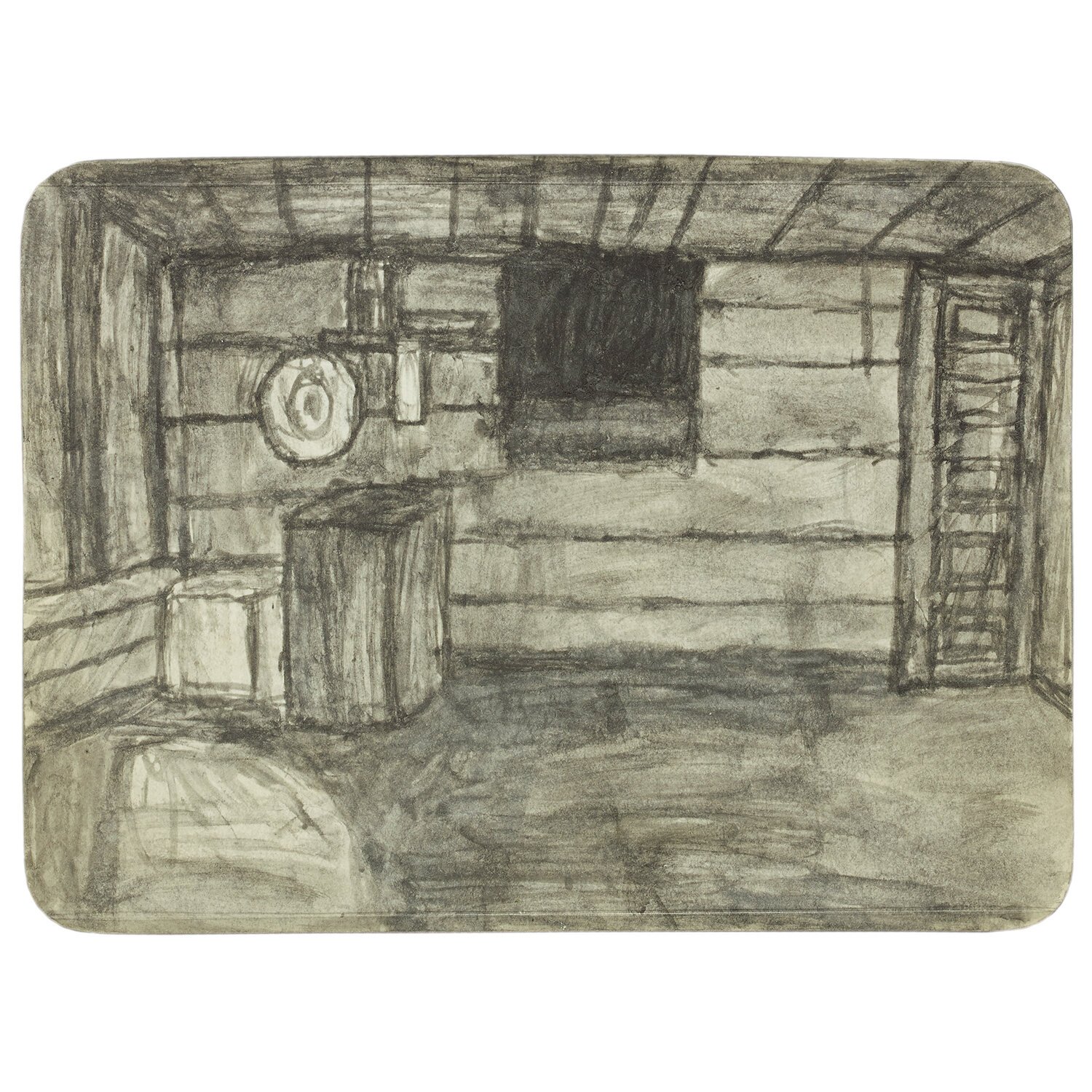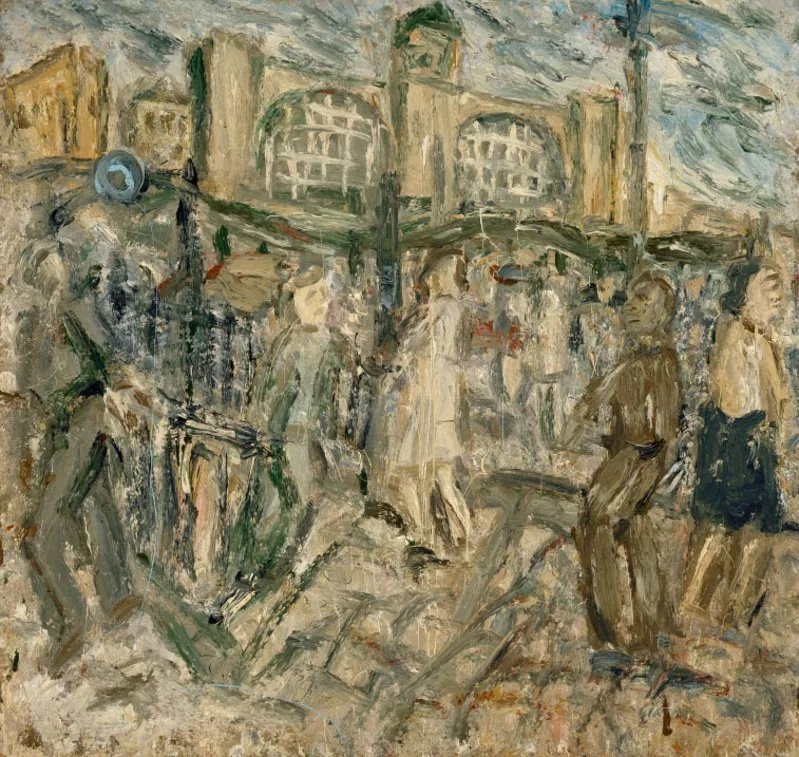Mad About Cats - On Outsider Art
13 January 2022
With a recent biopic starring Benedict Cumberbatch focusing attention on the illustrator and psychiatric patient Louis Wain, the concept of Outsider Art is a current topic for discussion.
Richard Unwin
Richard Unwin is a London-based freelance arts journalist and creative writer, contributing to The Art Newspaper, Frieze, Dazed & Confused and Flux, among others.
Louis Wain, ‘I Am Happy Because Everyone Loves Me’, chalk and coloured ink on paper, circa 1928.
Image courtesy of Bethlem Museum of the Mind.
The English artist Louis Wain (1860-1939) is currently a man commanding attention. Played by Benedict Cumberbatch in the 2021 biopic, The Electrical Life of Louis Wain, his artwork is also on display in a new exhibition at the Bethlem Museum of the Mind (until 14 April 2022).
Famous in his own lifetime for his depictions of cats, the enduring interest in Wain’s work has partly been driven by his classification as an Outsider Artist. For Wain, that distinction is something that relates to the last period of his life. Certified insane in 1924, Wain was committed to Springfield Hospital in Tooting before later being moved to Bethlem Hospital. Situated in Southwark when Wain was an inpatient, the latter hospital has moved location a number of times during its existence, but is best known as the institution that coined the term ‘bedlam’.
Still operational today, on a site of over 200 acres in Bromley, South East London, the current Bethlem Royal Hospital grounds are also home to the Bethlem Museum of the Mind. Opened in 2015 by Grayson Perry, the museum is responsible for what it describes as an “internationally renowned collection of archives, art and historic objects, which together offer an unparalleled resource to support the history of mental healthcare and treatment.” Within that collection are items by artists like Wain that many would classify as Outsider Art. The museum, however, seems less eager to apply the label on its website, focusing more on the therapeutic benefits of art and the importance of creative output and exploration.
A reticence to refer directly to Outsider Art perhaps points to the fact that it can be both an open-ended and contentious concept. Encompassing work produced outside the mainstream art world, often by artists who are self-taught or lack formal education (particularly of the higher academic kind), Outsider Art intersects with other genres peripheral to the mainstream, such as Folk Art. Indeed, taken at its broadest definition, Outsider Art could be said to include Folk Art as one of its sub-genres, though the latter already feels vast enough to exist on its own terms. While a single artist can often fall into both camps, one way to differentiate the two concepts is that Folk Art often carries a connection to community and shared identities, whereas discussions of Outsider Art tend to focus on individual mavericks who follow their own trajectories and solipsistic paths.
The contemporary understanding of Outsider Art is usually traced back to the French artist Jean Dubuffet who developed the concept of art brut (‘raw art’) in the 1940s. A few decades later, the British writer Roger Cardinal drew on Dubuffet’s work to introduce the English-language term in 1972. Whereas Dubuffet had a specific, carefully thought out approach to art brut - interested in so called ‘primitive’ art, as well as artwork created by the mentally ill, prisoners and children - later use of Outsider Art has expanded to create a broader, more ambiguous field.
James Castle (1899–1977), ‘Untitled (interior shelves, verso window) n.d.’, soot on found paper, double-sided, 17 cm x 23 cm.
Image courtesy of Joost van den Bergh.
However precisely it is defined, labelling an artist as an ‘outsider’ can throw up difficult but important questions to consider. Many artists labelled as such may take pride in the distinction, feeling that it fits with their sense of individuality, an inner antagonism or ambivalence towards society, or possibly an adherence to forms of political radicalism or anarchism. As an exonym, though - bestowed onto an individual or group by an external establishment, majority, observer or art critic - the outsider label could be construed as ostracising and discriminatory. Like in the case of Louis Wain, work by artists with mental health issues is usually seen as a key constituent of Outsider Art, as can be work by artists with physical disabilities. Should all such work and its creators so readily be given ‘outsider’ status? A related question is who gets to decide what is ‘inside’ and what is ‘outside’ and where the border between the two should be drawn?
Louis Wain, ‘Sweetness Coyed Love into its Smile’, gouache on paper, circa 1935.
Image courtesy of Bethlem Museum of the Mind.
Individual artists can, of course, move across that border. As an example that is very prominent in contemporary culture, most graffiti artists begin their journey outside the mainstream, but can receive recognition from curators, critics and the market to the point that their work can sell for millions of pounds. Having had an important influence on Dubuffet and his concept of art brut, graffiti as a medium has likewise evolved from being a branch of Outsider Art to play an influential role within the wider art world. The journey between outsider and insider status can also go the other way, with artists who develop mental health issues, or enter psychiatric institutions, often seeing their later work categorised as Outsider Art. As The Guardian art critic, Jonathan Jones, has written, Wain was an example of someone who “became an outsider artist.” Beginning his career as a successful illustrator, producing work for commercial clients and his own independent publications, it is the art Wain created whilst a patient at Bethlem and other institutions that has attracted the outsider label.
Another quirk of Outsider Art is that while it can be viewed as peripheral and eccentric, it is often also accessible and popular with the general public. Some of the most noticeable and much loved examples of the genre are the garden and outdoor art projects that can be found around the world, from the Rock Garden of Chandigarh, to numerous individualistic installations in the USA. Antoni Gaudí may have been a celebrated architect rather than an outsider artist, but his famous Parc Güell in Barcelona, with its riotous mosaic work and strange forms, has influenced many such projects. The way in which Gaudí’s buildings across Barcelona add a magical, interventionist element to the city similarly echo an outsider spirit - with their presence enlivening and expanding the everyday of everyone else. The other worldly towers of the Sagrada Família - Gaudí’s most well known, yet still today unfinished monument - extend that connection, reflecting a desire to reach skywards that has been shared by other artists, visionaries and mavericks.
Bill Traylor (circa 1853-1949), Man on White, Woman on Red / Man with Black Dog, double sided, 1939-1942’, sold for $507,000 at Christie’s New York in January 2020.
Credit: Christie’s Images Ltd. 2022.
Despite the complications that can surround the concept, Outsider Art remains a commonly used term that can play a beneficial role in providing space for artists and artwork that might otherwise be ignored. It is also a genre that has now firmly gained market credibility, attended to at Christie’s by a dedicated department, while the specialised Outsider Art Fair runs biannual editions in both Paris and New York. With high-end graffiti and related work effectively now a separate category, prices for Outsider Art can run from under a thousand pounds through to hundreds of thousands. A January 2020 Outsider Art auction at Christie’s in New York achieved total sales of over $3million. Even during the pandemic, a second sale at the same auction house totalled over $2million in last January. In both auctions, pieces by the African-American self-taught artist Bill Traylor (1853-1949) achieved the highest figures, with the double sided work on paper, Man on White, Woman on Red / Man with Black Dog, notably making over $500,000. By comparison, small paintings by Louis Wain have recently sold for prices between £2000 to £5000.
Once appropriated and consumed by the market, does the outsider label then become negated? Either way, it is worth remembering that there are no firm boundaries between Outsider and other forms of art. Likewise, characteristics that can be attributed to outsider artists - such as a desire to create art for art’s sake, a fervent dedication to that task and the ability to execute it in an individually unique manner - can be equally relevant to artists working in the ‘mainstream.’ As Grayson Perry is quoted as saying by the Bethlem Museum of the Mind, “art is obsession, voyage of discovery and therapy all rolled into one.” Whether it is ‘inside’ or ‘outside’, similar motivations and intentions are often at play.















